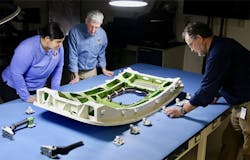As Boeing Restarts, FAA to Increase Oversight
As Boeing prepares to resume operations in Washington and Oregon following the seven-week strike by thousands of International Assn. of Machinists and Aerospace Workers, the Federal Aviation Administration announced it will expand its oversight of the 737 MAX program there.
Boeing workers are not required to return to work until November 12, but the agency confirmed that FAA Administrator Mike Whitaker has advised Boeing CEO Kelly Ortberg that the company must ensure its safety and quality management systems are in place when production resumes.
The FAA also made it known that it continued its enhanced presence at Boeing plants throughout the period of the strike, which began September 13. And it said it will "further strengthen and target our oversight as the company begins its return-to-work plan."
The oversight effort concerns the 737 MAX program, though the strike also halted assembly of 777 aircraft.
Boeing had been assembling the 737 MAX jets at a much-reduced rate since the FAA arrived in Renton, Wash., last winter to investigate the conditions that resulted in the January 5 incident aboard an Alaska Airlines 737 MAX, in which the jet’s side-door panel failed midflight.
The initial audit of the 737 MAX program that FAA completed in February turned up 97 examples of noncompliance in Boeing’s manufacturing process control, parts handling, and product control.
Boeing officials have been meeting regularly with FAA to report on its progress in bringing the operations into conformity with production-process control system.
In October, FAA announced it plans to start a new review of Boeing’s safety-management systems, covering details like risk-assessment quality, resource allocation, and adherence to regulatory requirements.
